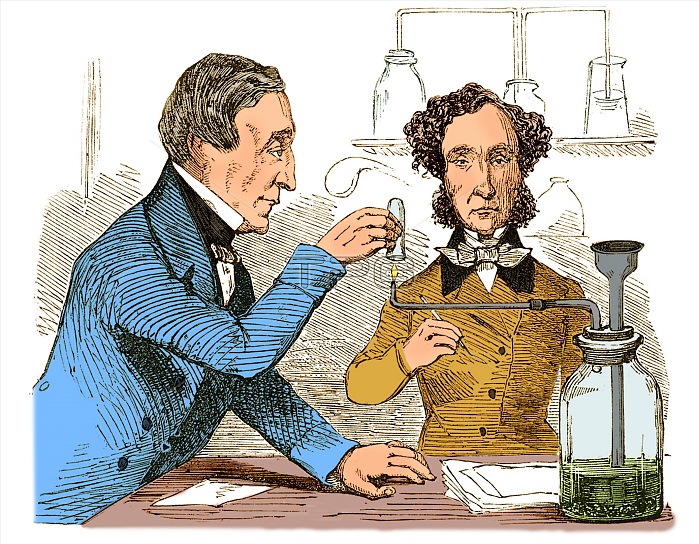
Performing the Marsh Test, 1856. Doctor Alfred Swaine Taylor (left) and a colleague, performing the Marsh test on samples taken from the body of John Parsons Cook. The two were looking for traces of arsenic and antimony. The Marsh test is a method for the detection of minute amounts of arsenic in foods (the residue of fruit spray) or in stomach contents. The sample is placed in a flask with arsenic-free zinc and sulfuric acid. Arsine gas (also hydrogen) forms and is led through a drying tube to a hard glass tube in which it is heated. The arsenic is deposited as a "mirror" just beyond the heated area and on any cold surface held in the burning gas emanating from the jet. Antimony gives a similar test, but the deposit is insoluble in sodium hypochlorite, whereas arsenic will dissolve. The test was named for its inventor, the English chemist James Marsh.
| px | px | dpi | = | cm | x | cm | = | MB |
Details
Creative#:
TOP22165506
Source:
達志影像
Authorization Type:
RM
Release Information:
須由TPG 完整授權
Model Release:
N/A
Property Release:
No
Right to Privacy:
No
Same folder images:

 Loading
Loading